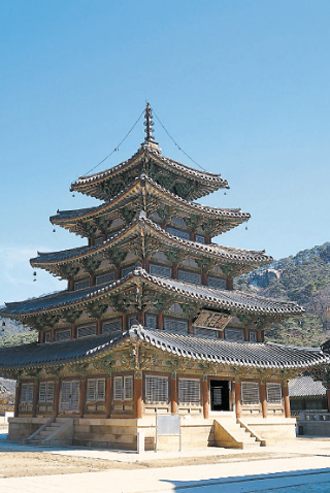5-story wooden pagoda only of its kind in Korea

Palsangjeon is the only wooden five-story pagoda in Korea. It was destroyed during the Japanese invasion of Korea in the 16th century and rebuilt in 1968.
Its name comes from the painting “Palsangdo” - the eight paintings on the four walls that depict the eight merciful acts of Buddha to save the people of the world.
The inside of the building is made up of three parts: the place to store the relics of Buddha (sarira), the place to enshrine the image of Buddha and the pictures of Palsangdo and the place for prayer to Buddha.
The first and second floors have five rooms in the front and side, while the third and forth floors have three rooms in the front and side.
The fifth floor is constructed with two rooms in the front and side.
The stone stairs to the building are well-balanced for its size, rising up above a low platform.
This pagoda has artistic importance because it is the largest building of its kind still standing and the only wooden pagoda in Korea.
Name: Palsangjeon Wooden Pagoda of Beopju Temple, Boeun
Period: Joseon Dynasty
Location: Boeun County, North Chungcheong
Status: National Treasure No. 55










with the Korea JoongAng Daily
To write comments, please log in to one of the accounts.
Standards Board Policy (0/250자)